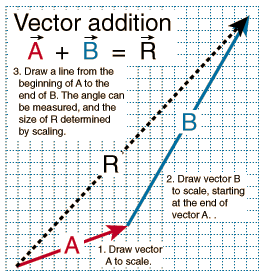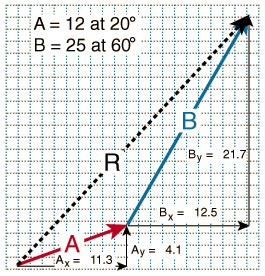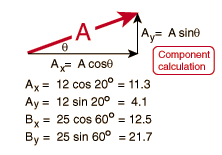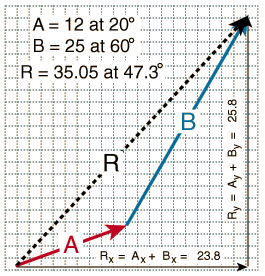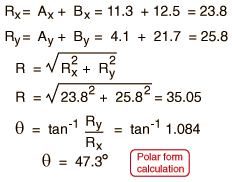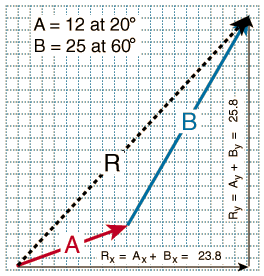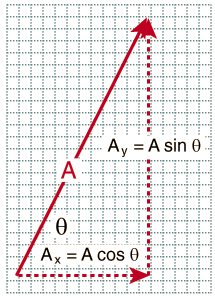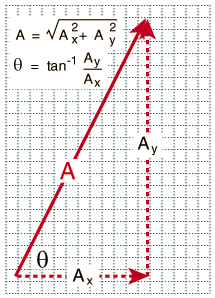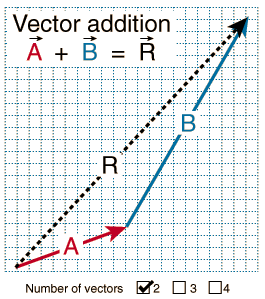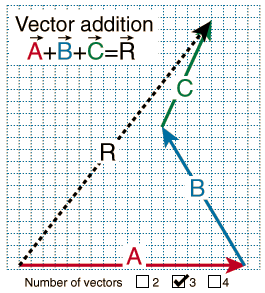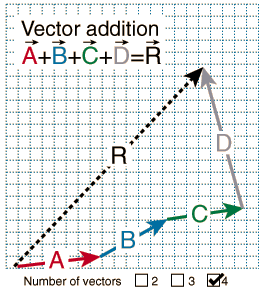Operaciones básicas con vectores
En las cantidades vectoriales, se deben especificar tanto su magnitud (número) como su dirección, en contraste con las cantidades escalares que se pueden especificar con solo el número. Cualquier conjunto de vectores del mismo tipo, (que tengan las mismas unidades) se puede combinar por medio de las operaciones básicas con vectores.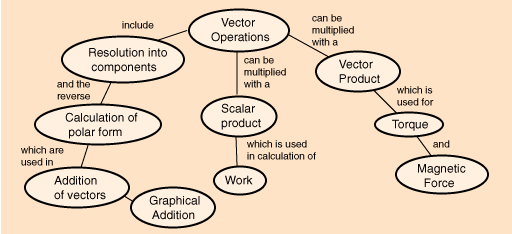
Math of vectors
| HyperPhysics***** Mechanics | R Nave |
